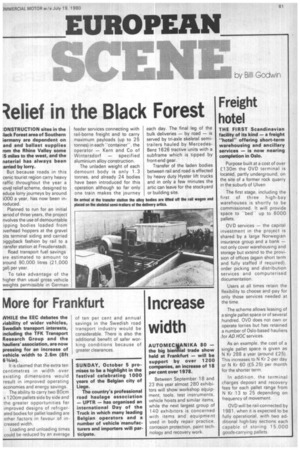Relief in the Black Forest
Page 83

If you've noticed an error in this article please click here to report it so we can fix it.
:ONSTRUCTION sites in the ■ lack Forest area of Southern lermany are dependent on and and ballast supplies rom the Rhine Valley some 15 miles to the west, and the naterial has always been :arried by lorry.
But because roads in this cenic tourist region carry heavy raffle throughout the year a iovel relief scheme, designed to educe lorry journeys by around i000 a year, has now been inroduced.
Planned to run for an initial )eriod of three years, the project nvolves the use of demountable .ipping bodies loaded from werhead hoppers at the gravel its terminal siding and carried Piggyback fashion by rail to a :ransfer station at Freudenstadt.
Road transport fuel savings are estimated to amount to around 90,000 litres (21,000 gal) per year.
To take advantage of the higher than usual gross vehicle weights permissible in German feeder services connecting with rail-borne freight and to carry maximum payloads (up to 25 tonnes) in each "'container", the operator — Kern and Co of Wintersdorf — specified aluminium alloy construction.
The unladen weight of each demount body is only 1.3 tonnes, and already 24 bodies have been introduced for this operation although so far only one train makes the journey each day. The final leg of the bulk deliveries — by road — is served by tri-axle skeletal semitrailers hauled by MercedesBenz 1626 tractive units with a subframe which is tipped by front-end gear.
Transfer of the laden bodies between rail and road is effected by heavy duty Hyster lift trucks and in only a few minutes the artic can leave for the stockyard or building site.








































































































































